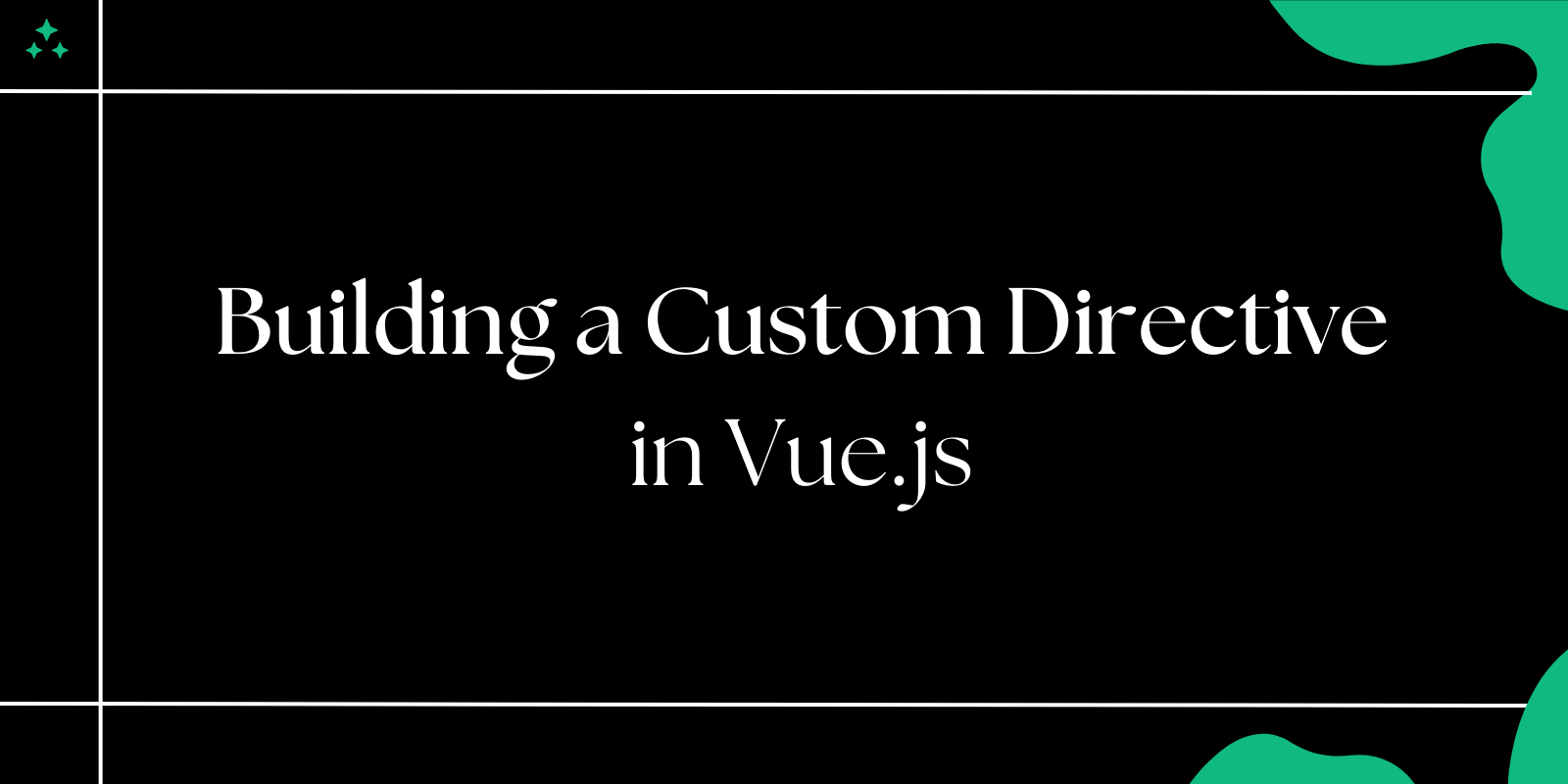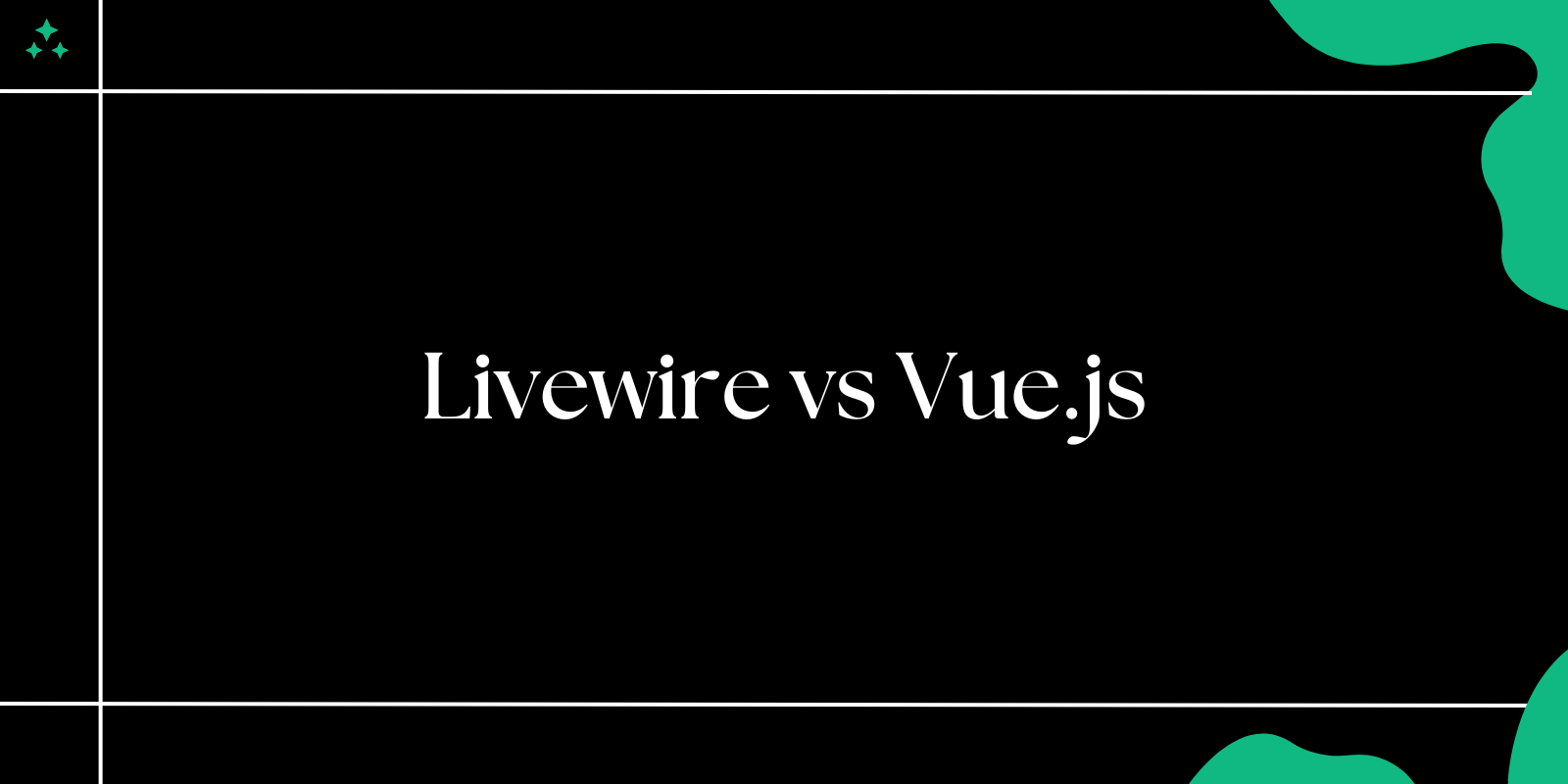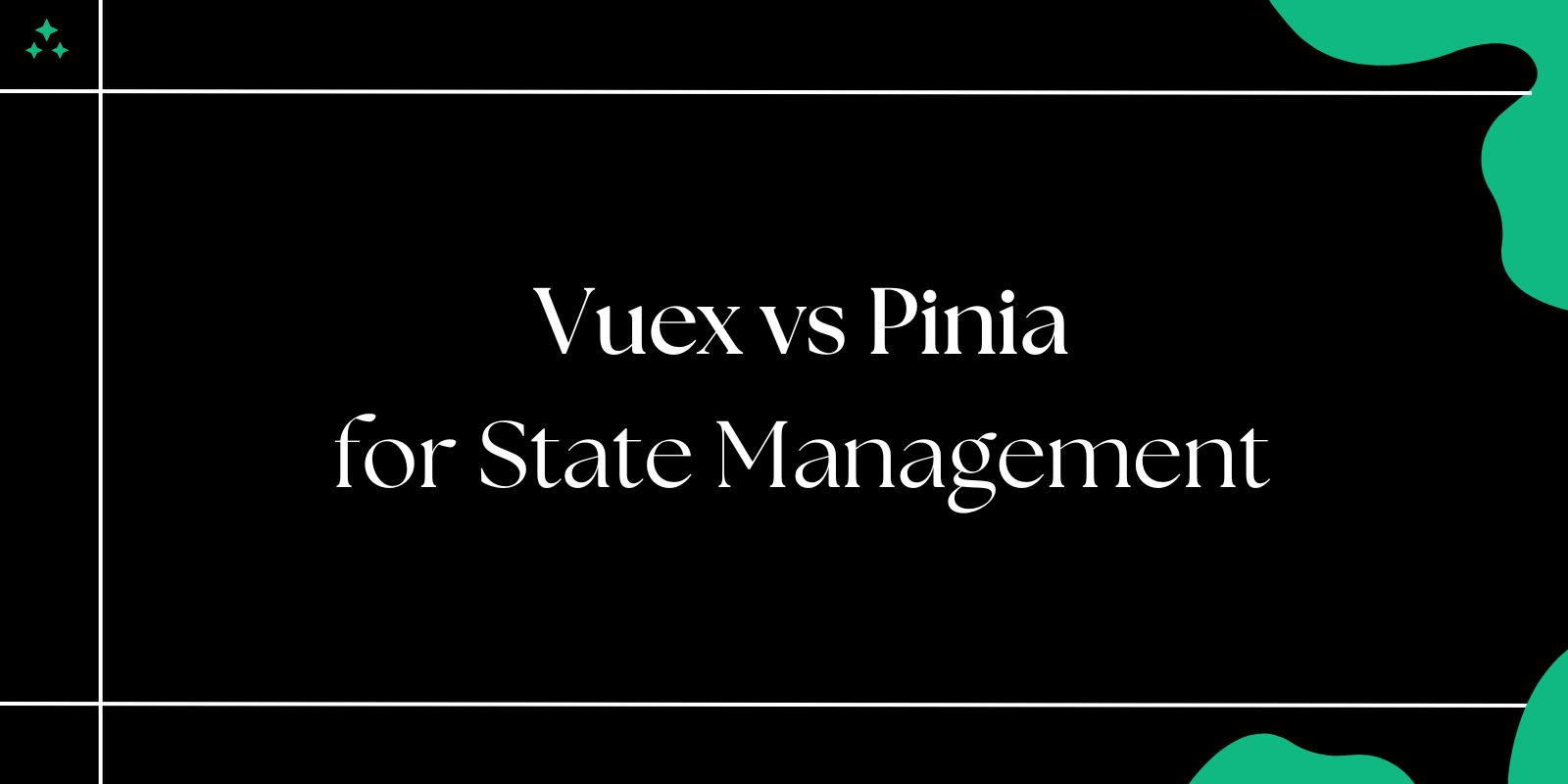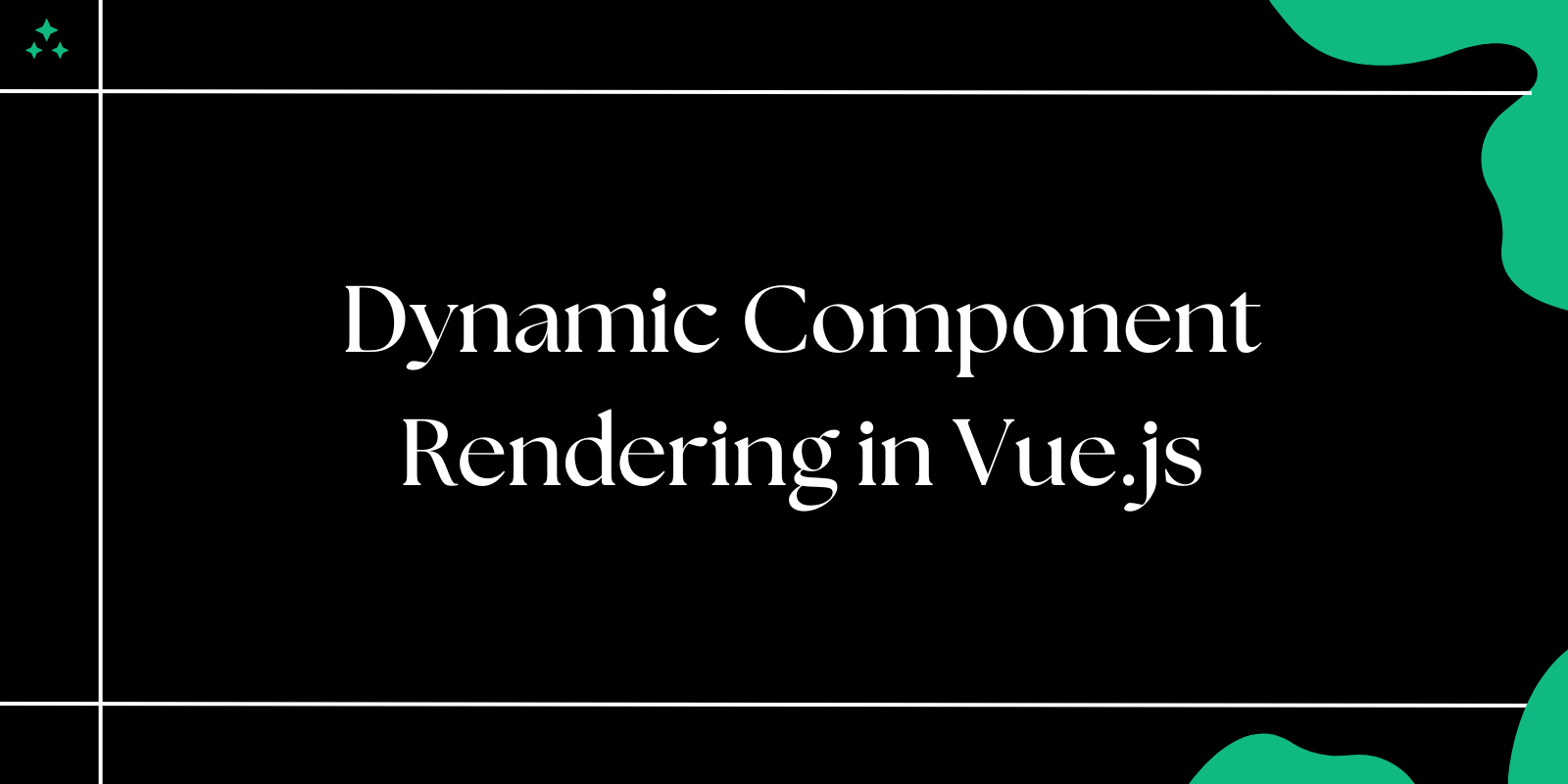Introduction
Vue.js provides a powerful way to extend its functionality with custom directives. While built-in directives like v-bind and v-if are commonly used, creating your own directives can solve unique challenges in your application that fall outside the typical component-data flow paradigm.
Custom directives shine when you need direct DOM manipulation, want to encapsulate complex DOM interactions, or need to integrate with third-party libraries that require imperative DOM access. They provide a declarative API for what would otherwise be imperative DOM operations scattered throughout your components.
In this article, we'll build custom directives from scratch, starting with a simple auto-focus directive and progressing to more sophisticated examples that demonstrate real-world production patterns.
1. What Are Custom Directives in Vue.js?
Custom directives allow you to directly manipulate the DOM in a reusable, declarative way. They are ideal for scenarios where reusable logic needs to interact with DOM elements outside of Vue's reactive data system.
Unlike components, which manage their own state and lifecycle, directives are stateless functions that operate on DOM elements. They receive the element they're bound to, along with binding information, and can respond to lifecycle hooks to perform DOM operations.
Directive Lifecycle Hooks
Vue 3 provides several lifecycle hooks for directives, each serving specific use cases:
| Hook | Description | Use Case | Timing |
|---|---|---|---|
created | Called before element's attributes or event listeners are applied | Initialize directive state, prepare data structures | Before DOM insertion |
beforeMount | Called before element is inserted into DOM | Set up initial DOM state, prepare for mounting | Just before DOM insertion |
mounted | Called after element is inserted into DOM | Focus inputs, initialize third-party libraries, measure dimensions | After DOM insertion |
beforeUpdate | Called before component updates | Cache current state, prepare for changes | Before reactive updates |
updated | Called after component updates | Respond to data changes, update DOM state | After reactive updates |
beforeUnmount | Called before element is removed | Clean up event listeners, save state | Before DOM removal |
unmounted | Called after element is removed | Final cleanup, dispose resources | After DOM removal |
⚠️ Warning: Always clean up in beforeUnmount or unmounted to prevent memory leaks, especially when working with event listeners, timers, or third-party library instances.
2. Creating a Custom Directive
Let's create a directive named v-focus that automatically focuses an input element, with enhanced functionality for production use.
Step 1: Define a Basic Directive
Directives are registered as objects with lifecycle hook methods:
// directives/focus.js
export default {
mounted(el) {
// Simple focus implementation
el.focus();
},
};
Step 2: Enhanced Focus Directive with Error Handling
A production-ready version should handle edge cases and provide better user experience:
// directives/focus.js
export default {
mounted(el, binding) {
// Only focus if element is focusable
if (el.tabIndex >= 0 || el.tagName.match(/^(INPUT|TEXTAREA|SELECT|BUTTON)$/)) {
// Delay focus to ensure DOM is fully rendered
nextTick(() => {
try {
el.focus();
// Optional: Select text for input elements if specified
if (binding.modifiers.select && el.select) {
el.select();
}
// Optional: Trigger focus only if not disabled
if (binding.modifiers.conditional && el.disabled) {
return;
}
} catch (error) {
console.warn('v-focus: Unable to focus element', error);
}
});
}
},
// Handle dynamic focus changes
updated(el, binding) {
// Re-focus if binding value changes from false to true
if (!binding.oldValue && binding.value && binding.value !== binding.oldValue) {
el.focus();
}
}
};
Step 3: Register the Directive
Global Registration (recommended for widely-used directives):
// main.js
import { createApp } from "vue";
import App from "./App.vue";
import focusDirective from "./directives/focus";
const app = createApp(App);
// Register the directive globally
app.directive("focus", focusDirective);
app.mount("#app");
Local Registration (for component-specific directives):
// MyComponent.vue
<script>
import focusDirective from "./directives/focus";
export default {
directives: {
focus: focusDirective
},
// ... rest of component
}
</script>
Step 4: Use the Directive in Components
Apply the custom directive with various modifiers and values:
<template>
<div>
<h1>Custom Directive Examples</h1>
<!-- Basic usage -->
<input type="text" v-focus placeholder="Auto-focused on mount" />
<!-- With select modifier to select all text -->
<input type="text" v-focus.select value="This text will be selected" />
<!-- Conditional focus based on data -->
<input type="text" v-focus="shouldFocus" placeholder="Conditionally focused" />
<!-- With conditional modifier to respect disabled state -->
<input type="text" v-focus.conditional :disabled="isDisabled" />
</div>
</template>
<script>
export default {
data() {
return {
shouldFocus: false,
isDisabled: false
};
}
};
</script>
3. Enhancing Directives with Arguments and Modifiers
Directives become more powerful when they accept arguments, modifiers, and values. Let's create a comprehensive highlight directive that demonstrates these concepts.
Advanced Highlight Directive
// directives/highlight.js
export default {
mounted(el, binding) {
applyHighlight(el, binding);
},
updated(el, binding) {
// Only re-apply if binding value has changed
if (binding.value !== binding.oldValue) {
applyHighlight(el, binding);
}
}
};
function applyHighlight(el, binding) {
const { value, arg, modifiers } = binding;
// Default configurations
const defaultColor = 'yellow';
const defaultDuration = 300;
// Determine color from argument, value, or default
let color = arg || value || defaultColor;
// Handle object values for more complex configurations
if (typeof value === 'object' && value !== null) {
color = value.color || color;
const intensity = value.intensity || 0.3;
// Apply intensity modifier to color
if (modifiers.fade) {
el.style.backgroundColor = `${color}${Math.round(intensity * 255).toString(16).padStart(2, '0')}`;
} else {
el.style.backgroundColor = color;
}
// Handle duration for temporary highlights
if (value.duration && modifiers.temporary) {
setTimeout(() => {
el.style.backgroundColor = '';
}, value.duration);
}
} else {
// Simple color application
el.style.backgroundColor = color;
// Apply modifiers
if (modifiers.temporary) {
setTimeout(() => {
el.style.backgroundColor = '';
}, defaultDuration);
}
if (modifiers.border) {
el.style.border = `2px solid ${color}`;
}
if (modifiers.pulse) {
el.style.animation = `highlight-pulse-${color} 1s infinite`;
addPulseKeyframes(color);
}
}
}
function addPulseKeyframes(color) {
const styleId = `highlight-pulse-${color}`;
// Avoid duplicate style definitions
if (document.getElementById(styleId)) return;
const style = document.createElement('style');
style.id = styleId;
style.textContent = `
@keyframes highlight-pulse-${color} {
0%, 100% { background-color: transparent; }
50% { background-color: ${color}; }
}
`;
document.head.appendChild(style);
}
Usage Examples with Different Configurations
<template>
<div>
<!-- Basic color highlighting -->
<p v-highlight="'lightblue'">Light blue background</p>
<!-- Using argument for color -->
<p v-highlight:red>Red background using argument</p>
<!-- Temporary highlight with modifier -->
<p v-highlight.temporary="'green'">Temporarily highlighted (fades after 300ms)</p>
<!-- Multiple modifiers -->
<p v-highlight:orange.border.pulse>Orange with border and pulse animation</p>
<!-- Object configuration -->
<p v-highlight.fade="{ color: 'purple', intensity: 0.2, duration: 1000 }">
Subtle purple fade
</p>
<!-- Dynamic highlighting based on data -->
<p v-highlight="highlightConfig">Dynamically configured highlight</p>
</div>
</template>
<script>
export default {
data() {
return {
highlightConfig: {
color: 'cyan',
intensity: 0.4,
duration: 2000
}
};
}
};
</script>
4. Real-World Directive Examples
Click Outside Directive
A commonly needed directive for closing dropdowns and modals:
// directives/clickOutside.js
export default {
mounted(el, binding) {
el._clickOutsideHandler = (event) => {
// Check if click was outside element and its children
if (!(el === event.target || el.contains(event.target))) {
// Call the provided method
if (typeof binding.value === 'function') {
binding.value(event);
}
}
};
// Add event listener with slight delay to avoid immediate triggering
setTimeout(() => {
document.addEventListener('click', el._clickOutsideHandler);
}, 0);
},
beforeUnmount(el) {
// Clean up event listener
if (el._clickOutsideHandler) {
document.removeEventListener('click', el._clickOutsideHandler);
delete el._clickOutsideHandler;
}
}
};
Intersection Observer Directive
For implementing lazy loading and scroll-triggered animations:
// directives/intersect.js
export default {
mounted(el, binding) {
const options = {
threshold: binding.arg || 0.1,
rootMargin: binding.modifiers.margin || '0px'
};
const observer = new IntersectionObserver((entries) => {
entries.forEach(entry => {
if (entry.isIntersecting) {
// Call the provided function
if (typeof binding.value === 'function') {
binding.value(entry, observer);
}
// Auto-unobserve if specified
if (binding.modifiers.once) {
observer.unobserve(el);
}
}
});
}, options);
observer.observe(el);
el._intersectionObserver = observer;
},
beforeUnmount(el) {
if (el._intersectionObserver) {
el._intersectionObserver.disconnect();
delete el._intersectionObserver;
}
}
};
Resize Observer Directive
For responsive components that need to react to size changes:
// directives/resize.js
export default {
mounted(el, binding) {
if (!window.ResizeObserver) {
console.warn('ResizeObserver not supported');
return;
}
const resizeObserver = new ResizeObserver((entries) => {
for (let entry of entries) {
const { width, height } = entry.contentRect;
if (typeof binding.value === 'function') {
binding.value({ width, height, entry });
}
}
});
resizeObserver.observe(el);
el._resizeObserver = resizeObserver;
},
beforeUnmount(el) {
if (el._resizeObserver) {
el._resizeObserver.disconnect();
delete el._resizeObserver;
}
}
};
5. Best Practices and Considerations
Performance Considerations
Debounce Expensive Operations: When directives respond to frequent events (scroll, resize), implement debouncing:
// utilities/debounce.js
export function debounce(func, wait) {
let timeout;
return function executedFunction(...args) {
const later = () => {
clearTimeout(timeout);
func(...args);
};
clearTimeout(timeout);
timeout = setTimeout(later, wait);
};
}
// In directive
import { debounce } from '@/utilities/debounce';
export default {
mounted(el, binding) {
const debouncedHandler = debounce(() => {
// Expensive operation
}, 100);
el.addEventListener('scroll', debouncedHandler);
}
};
Memory Management: Always clean up resources to prevent memory leaks:
export default {
mounted(el, binding) {
// Store references for cleanup
el._customEventHandler = () => { /* handler logic */ };
el._intervalId = setInterval(() => { /* interval logic */ }, 1000);
document.addEventListener('customEvent', el._customEventHandler);
},
beforeUnmount(el) {
// Clean up all resources
if (el._customEventHandler) {
document.removeEventListener('customEvent', el._customEventHandler);
delete el._customEventHandler;
}
if (el._intervalId) {
clearInterval(el._intervalId);
delete el._intervalId;
}
}
};
Testing Custom Directives
Create testable directives by separating logic from DOM manipulation:
// directives/testable-highlight.js
export function applyHighlight(element, color, options = {}) {
// Pure function that can be easily tested
element.style.backgroundColor = color;
if (options.border) {
element.style.border = `2px solid ${color}`;
}
return element;
}
export default {
mounted(el, binding) {
applyHighlight(el, binding.value, binding.modifiers);
},
updated(el, binding) {
if (binding.value !== binding.oldValue) {
applyHighlight(el, binding.value, binding.modifiers);
}
}
};
Production Deployment Tips
Environment-Specific Behavior: Handle different environments gracefully:
export default {
mounted(el, binding) {
// Skip in SSR environments
if (typeof window === 'undefined') return;
// Development-only warnings
if (process.env.NODE_ENV === 'development') {
if (!binding.value) {
console.warn('v-custom-directive: No value provided');
}
}
// Production optimizations
if (process.env.NODE_ENV === 'production') {
// Reduced error handling for performance
}
}
};
6. When to Use Custom Directives
Custom directives are best suited for:
Ideal Use Cases
- DOM Manipulations: Operations that require direct element access (focus, scroll, measurements)
- Third-party Library Integration: Wrapping jQuery plugins, chart libraries, or other imperative APIs
- Cross-component DOM Logic: Reusable DOM behaviors needed across multiple components
- Performance-critical Operations: Direct DOM access without Vue's reactivity overhead
- Browser API Integration: Working with Intersection Observer, Resize Observer, or other modern APIs
When to Avoid Custom Directives
- State Management: Use Vuex/Pinia instead of directive-managed state
- Component Communication: Use props, events, or provide/inject
- Complex UI Logic: Create components instead of overloading directives
- Server-Side Rendering: Many DOM operations won't work during SSR
Trade-offs Table
| Aspect | Custom Directives | Components | Composables |
|---|---|---|---|
| DOM Access | Direct, immediate | Through refs | Through refs |
| Reusability | High (template-based) | High (component-based) | High (logic-based) |
| Testing | Moderate complexity | Straightforward | Straightforward |
| SSR Compatibility | Limited | Full | Full |
| Bundle Size | Minimal | Moderate | Minimal |
| Learning Curve | Moderate | Low | Low |
Conclusion
Custom directives in Vue.js provide a clean and reusable way to manage DOM behavior in your applications. They excel at encapsulating imperative DOM operations within Vue's declarative paradigm, making complex interactions both reusable and maintainable.
The key to successful directive implementation lies in understanding their lifecycle, properly managing resources, and choosing appropriate use cases. When built with production considerations in mind-including error handling, performance optimization, and proper cleanup-custom directives become powerful tools for creating sophisticated user interfaces.
Start with simple directives like the focus example, then gradually build more complex ones as you encounter specific DOM manipulation needs in your projects. Remember to always prioritize code clarity, resource cleanup, and user experience when designing your custom directives.



